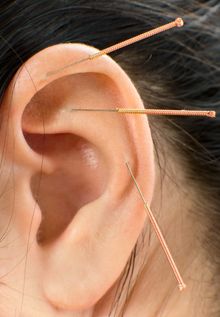The History of Acupuncture & Its Benefits

Acupuncture has been practiced for thousands of years since first originating in China around 100 BCE. Although this therapeutic practice has evolved since its first inception, it is still used to create a balanced state within the body by unblocking the flow of vital energy, or Qi. At The Ellenburg Center for Natural Medicine in Anchorage, AK, it is one form of medicine practiced by Dr. Ellenburg to help treat numerous conditions, including insomnia, depression, anxiety, headaches, intestinal complaints, and pain.
A Guide to Acupuncture
The History of Acupuncture
Acupuncture is believed to have begun as a combination of Taoist philosophy and traditions that were passed down over centuries and originally started the concept of channels (meridians) in which the Qi flowed. The system of meridians was first mentioned in documents placed in the tomb of Ma-Wang-Dui, which was sealed in China in 198 BCE; however, the treatment of acupuncture as it is understood today was first noted in the The Yellow Emperor’s Classic of Internal Medicine from around 100 BCE.
 Although acupuncture would continue to develop over the following centuries and become a part of standard traditional Chinese medicine, the basis of modern acupuncture would not be formed until the Ming Dynasty (1368-1644) and the publication of The Great Compendium of Acupuncture and Moxibustion. Here the full 365 points of the body that represent openings to the channels are listed and described.
Although acupuncture would continue to develop over the following centuries and become a part of standard traditional Chinese medicine, the basis of modern acupuncture would not be formed until the Ming Dynasty (1368-1644) and the publication of The Great Compendium of Acupuncture and Moxibustion. Here the full 365 points of the body that represent openings to the channels are listed and described.
With the arrival of Western medicine in the 1700s, acupuncture became less accepted as a form of treatment and would disappear from Chinese medicine until around the 1950s. By this time acupuncture had already made its way around the globe, and other practitioners sought to explain the scientific reasoning for how it provided real results. Many studies on its effectiveness at treating back pain, headaches, nausea, and even dental pain were released and many practitioners even noted how the meridian points aligned with nerve endings and affected brain function, particularly areas responsible for inhibiting pain.
Why Acupuncture Is Still Practiced Today
In 1997, the U.S. National Institute of Health (NIH) released a study noting the safety and efficacy of acupuncture for treating numerous health conditions. Following this, many insurers accepted acupuncture as a form of holistic medicine used to treat everything from musculoskeletal problems to migraines, anxiety, and insomnia. There have also been a plethora of clinical studies demonstrating that acupuncture does effectively treat numerous diseases and health conditions, and is able to help countless others to some degree.
Today's acupuncturist will typically promote full-body wellness, and they will usually combine acupuncture treatment with other natural medicines, including massage therapy and herbal medicine. If you have an ailment that has been bothering you, contact the Ellenburg Center for Natural Medicine today at (907) 563-2366. You can also learn more about their acupuncture and other holistic medicine options by visiting them online.
About the Business
Have a question? Ask the experts!
Send your question

